
History Quiz (Super Hard)
Difficulty : Hard Get 4/10 correct to pass the quiz
Question 1 of 10
Who is Neil Armstrong?
Question 2 of 10
What is the name of the 2000-year-old elliptical amphitheatre that is located in the middle of Rome?
Advertisement
Question 3 of 10
In 1934, the Shah changed which country's name from Persia?
Question 4 of 10
The infamous Valentine's Day Massacre took place in 1929 in which US city?
Question 5 of 10
In what year did the hippie counterculture revolution known as the Summer of Love occur?
Question 6 of 10
What does the phrase 'Blitzkrieg' translate to in English?
Question 7 of 10
In what year did the 'Battle of the Coral Sea' occur during World War II?
Advertisement
Question 8 of 10
Which is the longest river flowing through Iraq?
Question 9 of 10
What was the job of William B. Saxbe during Gerald Ford's Presidency?
Question 10 of 10
Rabat is twinned with which US city?
Advertisement

MORE QUIZZES
World History Quiz
Did you pay attention in school?
Did you pay attention in school?

General Trivia Quiz
10 mixed up questions
10 mixed up questions

History Quiz for the curious
10 trivia questions for everyone
10 trivia questions for everyone

Quiz on Science
10 questions about science
10 questions about science

The Spanish Words Challenge
Tell us the meaning of these 10 words
Tell us the meaning of these 10 words

Einstein Trivia Quiz
10 Questions
10 Questions
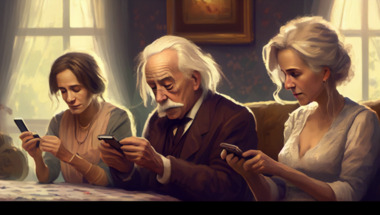
1980s Lyrics Quiz
Do you remember all these famous songs?
Do you remember all these famous songs?

10 General Knowledge Questio
Can you beat it?
Can you beat it?

Quiz containing a variety of
Here are ten enjoyable trivia queries.
Here are ten enjoyable trivia queries.

General Trivia Quiz
How high can you score?
How high can you score?

Science & Nature Quiz
10 Trivia Questions
10 Trivia Questions

1970s Song Quiz
How many songs do you know?
How many songs do you know?
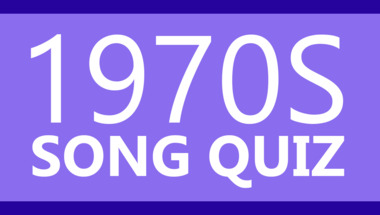
Advertisement
World Geography Quiz
10 mixed questions for you
10 mixed questions for you
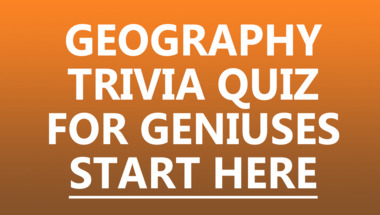
General Mixed Trivia Quiz
10 fun questions
10 fun questions

1960s Song Quiz
10 songs to guess
10 songs to guess

Trivia Quiz : Can you score
10 rather difficult questions
10 rather difficult questions

Hard trivia challenge
How smart are you really?
How smart are you really?

Geography Quiz
10 mixed questions
10 mixed questions

General trivia quiz
10 questions
10 questions

1960s Song Quiz
How many songs can you guess?
How many songs can you guess?

Quiz of general knowledge
10 questions of mixed topics
10 questions of mixed topics

1970s Song Quiz
10 mixed questions
10 mixed questions

Trivia Quiz for the smart
10 questions
10 questions

Trivia Quiz: History Edition
Test your knowledge with these 10 quiz questi..
Test your knowledge with these 10 quiz questi..
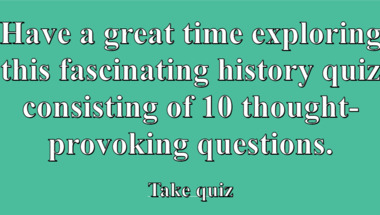
Advertisement
Trivia Quiz
10 questions
10 questions

Trivia quiz for people who a
Can you score 8/10?
Can you score 8/10?

10 general trivia questions
Please tell me your score in the comments
Please tell me your score in the comments

1960s History Quiz
How many of them will you answer correctly?
How many of them will you answer correctly?
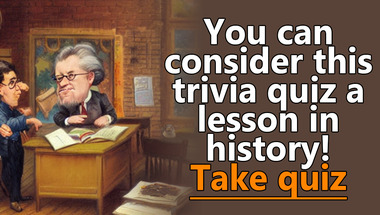
General Knowledge For Trivia
10 questions to answer
10 questions to answer

Who sang these hits from 197
Tell us your result in the comments
Tell us your result in the comments

Trivia Quiz
Let us know your score in the comments
Let us know your score in the comments

10 Trivia Questions
How many correct answers will you get?
How many correct answers will you get?

A quiz about food & cooking
If you want, please tell us your score in the..
If you want, please tell us your score in the..

I made you a quiz about 60s
Do you also love music from the 1960s?
Do you also love music from the 1960s?

Mixed Trivia Questions
Let's see how smart you really are!
Let's see how smart you really are!

Spelling Quiz
How many correct will you get?
How many correct will you get?

Advertisement
Spelling Quiz
Only a genius will get more than 6 correct
Only a genius will get more than 6 correct

General Knowledge Quiz (10 q
Are you up for a quiz?
Are you up for a quiz?

10 hard questions about Hist
Can you answer them all?
Can you answer them all?
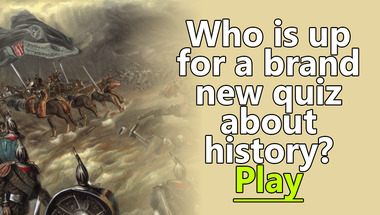
World Geography Quiz
10 mixed questions for you
10 mixed questions for you

Brainy Trivia Quiz
10 mixed questions
10 mixed questions

Mixed Trivia Quiz
Let us know your score in the comments
Let us know your score in the comments

1980s Lyrics Quiz
Do you remember all these famous songs?
Do you remember all these famous songs?

General Knowledge For Trivia
10 mixed genereal questions
10 mixed genereal questions

Einstein Trivia Quiz
10 hard questions
10 hard questions

Quiz on General Trivia
10 questions covering a variety of topics
10 questions covering a variety of topics

10 question trivia quiz
How smart are you?
How smart are you?

Amazing Trivia Quiz
10 hot questions
10 hot questions

Advertisement
Quiz on songs from the 1960s
Guessing is required for 10 songs.
Guessing is required for 10 songs.
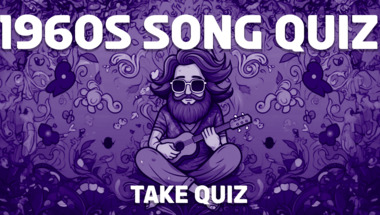
Hard trivia challenge
How smart are you really?
How smart are you really?

General trivia quiz
10 questions
10 questions

Trivia Quiz
10 questions
10 questions
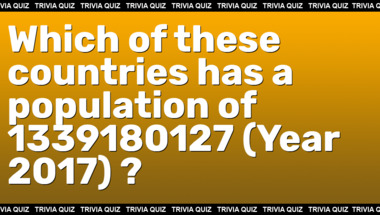
Quiz : Songs of the 1980s
How many songs do you remember?
How many songs do you remember?

Geography Quiz
10 questions
10 questions

Expert food quiz for top hom
Can you score higher than 6/10?
Can you score higher than 6/10?

1950s Lyrics Quiz for music
Did you live back in the 1950s?
Did you live back in the 1950s?

1960s Movies Quiz
10 questions to test your knowledge
10 questions to test your knowledge

60s Music Quiz
Are you old enough for this one?
Are you old enough for this one?

History Quiz
10 questions to answer
10 questions to answer
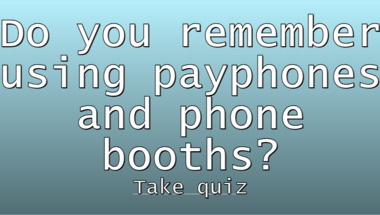
Quiz of general knowledge
10 questions spanning various categories
10 questions spanning various categories

Advertisement
Trivia Quiz
Let's see how smart you really are!
Let's see how smart you really are!

10 general trivia questions
How much do you know?
How much do you know?

Mixed trivia quiz for smart
10 mixed questions
10 mixed questions

World Geography Quiz
10 questions
10 questions

Mixed General Trivia Quiz
10 questions lined up
10 questions lined up

10 questions about celebriti
How many can you answer?
How many can you answer?

General Knowledge For Trivia
Let us know your score in the comments
Let us know your score in the comments

World History Trivia Quiz fo
10 mixed up history questions
10 mixed up history questions
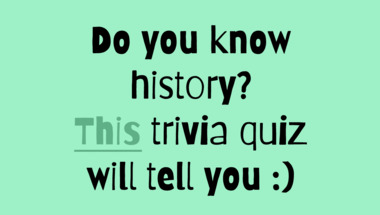
General trivia test
How many correct will you get?
How many correct will you get?
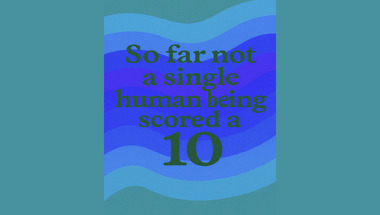
Quiz : 10 songs from the 197
Post your score in the comments!
Post your score in the comments!
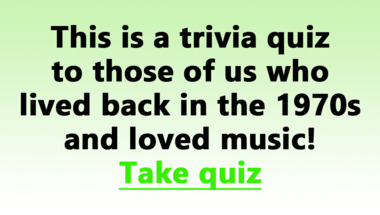
Trivia Quiz : Scoring higher
7/10 correct answers is more or less impossib..
7/10 correct answers is more or less impossib..

Super fun trivia quiz
Are you ready?
Are you ready?

Advertisement
A geography quiz for knowled
Let us know your score in the comments
Let us know your score in the comments
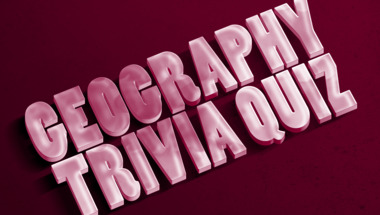
Mixed trivia quiz
Lets see how smart you really are!
Lets see how smart you really are!

Quiz on songs from 1963
Identify the singers of these popular 1963 so..
Identify the singers of these popular 1963 so..

Impossible general knowledge
Let's test your trivia skills!
Let's test your trivia skills!

Food Trivia Quiz
10 questions about food
10 questions about food

General Knowledge Quiz (10 q
Are you up for a quiz?
Are you up for a quiz?

Genius Trivia Test
Let us know your score in the comments
Let us know your score in the comments

10 mixed history questions
Tell us your result in the comments
Tell us your result in the comments

General knowledge quiz
10 mixed up questions
10 mixed up questions

General trivia genius quiz
These 10 questions will test your knowledge
These 10 questions will test your knowledge
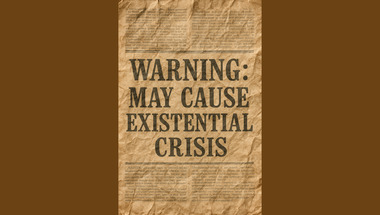
Science & Nature Quiz
10 questions to test your knowledge
10 questions to test your knowledge

Quiz : History 1930-1939 UK
How much do you remember?
How much do you remember?

Advertisement
Latin Words Quiz
10 questions
10 questions

General trivia quiz
10 questions in mixed themes
10 questions in mixed themes

Science & Nature Quiz
10 Trivia Questions
10 Trivia Questions

Movie Quiz
10 questions
10 questions
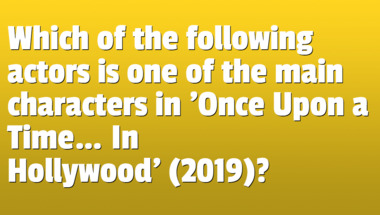
How smart are you?
10 questions trivia quiz
10 questions trivia quiz

Quiz: Do you know your plura
How many of them will you answer correctly?
How many of them will you answer correctly?

Quiz : Songs of the 1960s
How many correct will you get?
How many correct will you get?

Science Quiz
How nerdy are you?
How nerdy are you?
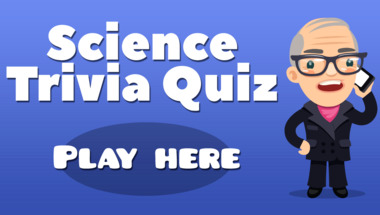
History Quiz
10 mixed questions
10 mixed questions
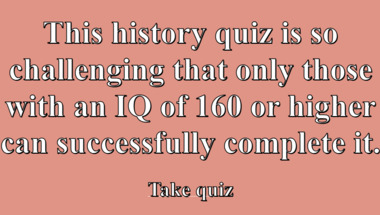
World Geography Quiz For You
Tell us your result in the comments
Tell us your result in the comments

Science Quiz
How nerdy are you?
How nerdy are you?
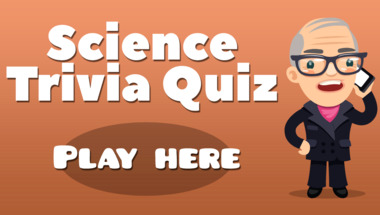
Test your knowledge with a q
Could you kindly answer ten questions for me?
Could you kindly answer ten questions for me?
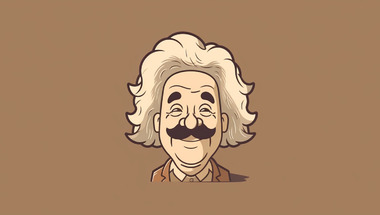
Advertisement
Trivia Quiz : General Knowle
10 fun questions
10 fun questions

Super hard food and cooking
10 mixed questions
10 mixed questions

Mixed General Trivia Quiz
10 fun questions
10 fun questions

General Trivia Quiz
Let's see how smart you really are!
Let's see how smart you really are!

Trivia Owl : How smart are y
10 trivia questions in mixed categories
10 trivia questions in mixed categories

Food & Cooking Quiz
10 mixed questions for you
10 mixed questions for you

10 mixed category trivia que
A quiz for our smartest followers
A quiz for our smartest followers

Trivia Quiz (10 mixed questi
Let us know your score in the comments
Let us know your score in the comments
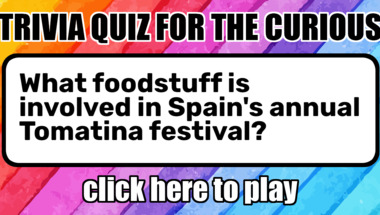
Trivia Quiz
Comment after playing
Comment after playing

Hard General Trivia Quiz
10 Almost Impossible Questions
10 Almost Impossible Questions
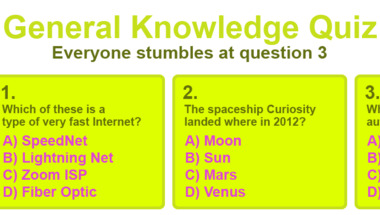
What do you know about histo
10 questions to test your knowledge
10 questions to test your knowledge

Quiz : 10 fresh trivia quest
Let us know your score in the comments
Let us know your score in the comments
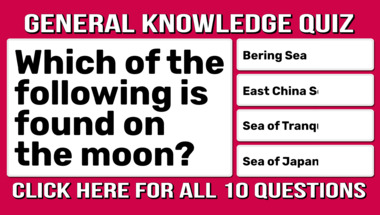
Advertisement
Quiz : We give you the album
Do you know all the best selling music albums..
Do you know all the best selling music albums..
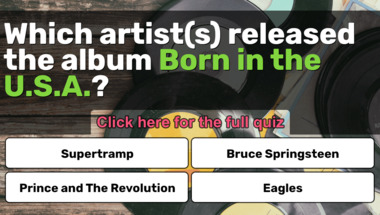
Are you smart enough for thi
10 mixed genereal questions
10 mixed genereal questions
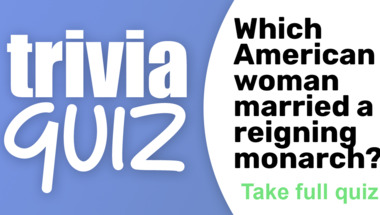
Hard Trivia Quiz
10 Impossible Questions
10 Impossible Questions

Geography Quiz
10 mix
10 mix

1972 song quiz
How many of them will you answer correctly?
How many of them will you answer correctly?

10 movie questions
A quiz about movies
A quiz about movies

Quiz about sayings
10 mixed questions
10 mixed questions

FOOL TEST
Let's see if you are a fool or not! :)
Let's see if you are a fool or not! :)

General Knowledge For Trivia
How many correct answers will you get?
How many correct answers will you get?

Trivia fun
a 10 question quiz
a 10 question quiz

Mixed General Quiz
10 fun questions
10 fun questions

Trivia Quiz
Are you smart enough for this one?
Are you smart enough for this one?

Advertisement